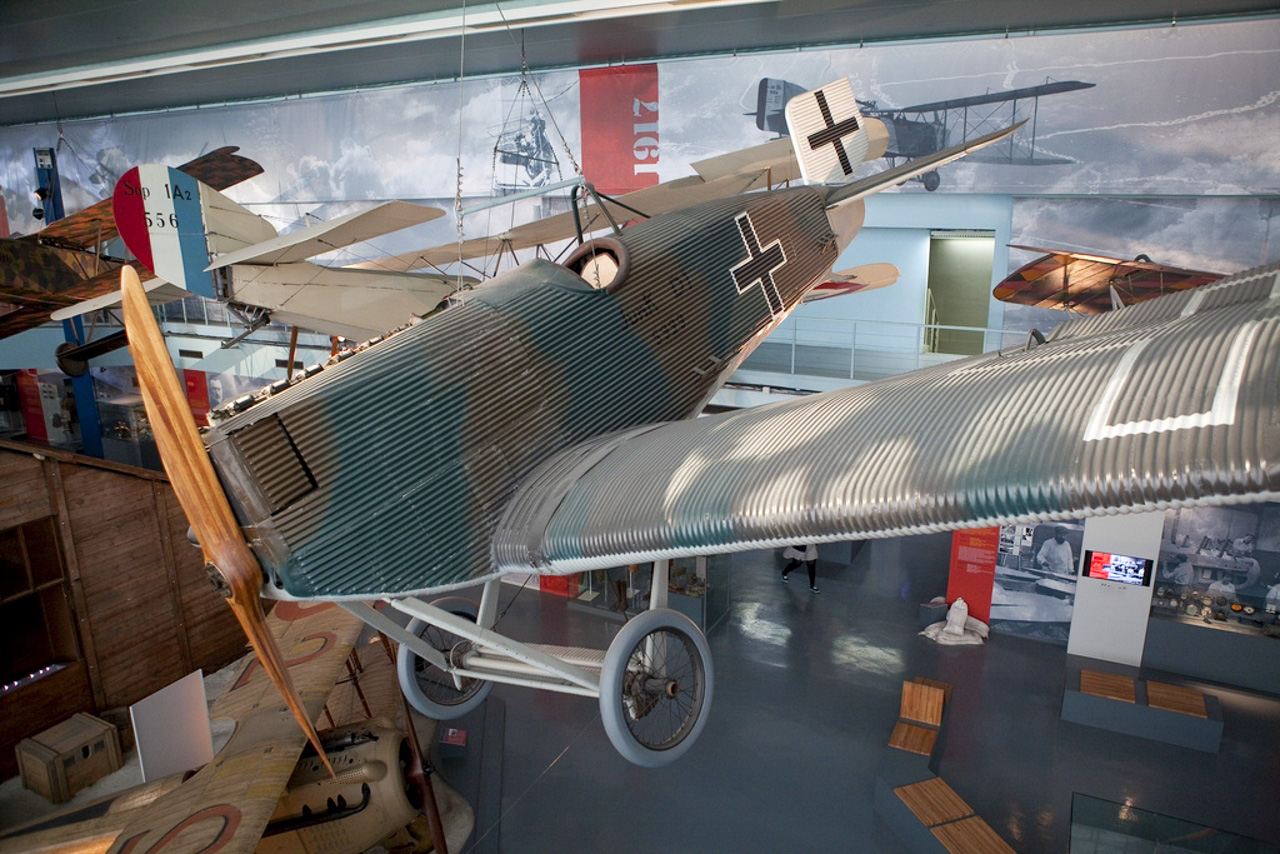
Junkers D.I | |
|---|---|
| Země | Německo |
| Roli | Bojovník |
| První let | pondělí 17. září 1917 |
| Postaven | 41 |
Tá Junkers D.I. (tovární označení J 9) byl jednoplošník vyráběný v Německu koncem první světové války, významný pro to, že se stal prvním kovovým stíhacím letounem, který vstoupil do služby. Prototyp, soukromý podnik junkers s názvem J 7, poprvé vzlétl 17. září 1917 a během testů prošel téměř půl tuctem podrobných změn ve svém designu. Když byla počátkem následujícího roku prokázána Idfliegu, ukázalo se, že je dostatečně působivá, aby vyústila v objednávku dalších tří letadel pro zkoušky. Změny provedené společností Junkers byly natolik významné, že firma přejmenoval další příklad na J 9, který byl dodán Idflieg namísto tří objednaných J7.
Zdroj: Junkers D.I na Wikipedii
| Junker J9 D1 Walk Around | |
|---|---|
| Fotograf | Unknow |
| Lokalizace | Neznámé |
| Fotografie | 22 |
Související sady:
Najděte sady na eBay:
Viz také:
Junkers D.I byl přelomovým letounem v historii letectví, protože byl prvním celokovovým stíhacím letounem, který vstoupil do služby. Navrhl jej Hugo Junkers, německý inženýr a podnikatel, který měl vizi vytvořit letadla, která by byla efektivnější a odolnější než konvenční dřevěná a látková. Junkers D.I vycházel z dřívějšího prototypu J 7, který poprvé vzlétl v září 1917 a během zkoušek prošel několika úpravami. Konečná verze, označená společností J 9 a armádou D.I, měla jednoplošné křídlo vyrobené z vlnitého duralu, kovové slitiny, která byla lehká a pevná. Trup byl rovněž vyroben z duralu, s trubkovým ocelovým rámem pokrytým kovovými panely. Motor byl vodou chlazený řadový šestiválec BMW IIIa o výkonu 185 koní. Výzbroj tvořily dva pevné kulomety Spandau namontované na přídi.
Junkers D.I byl představen v roce 1918, těsně před koncem první světové války. Měl to být námořní stíhač, protože dokázal odolat drsným podmínkám a přistát na nerovném terénu. Bojových akcí se však nedočkal mnoho, protože byl dodán příliš pozdě a v příliš malém počtu. Bylo vyrobeno pouze 41 letadel a většina z nich byla poslána k námořní jednotce, která po příměří operovala na východní frontě. Junkers D.I nebyl příliš obratný, ale měl vysokou rychlost a dostup a vynikající stabilitu a odolnost. Díky kovové konstrukci se také snadno udržoval a opravoval. Junkers D.I byl průkopníkem celokovové konstrukce letadel, která se v následujících desetiletích stala dominantní. To ovlivnilo vývoj pozdějších modelů Junkers, jako byl dopravní letoun F-13 a bitevní letoun J.I. Junkers D.I byl také jedním z prvních letounů, které používaly techniku raketového vzletu a doplňování paliva za letu. Junkers D.I byl pozoruhodným úspěchem inženýrství a inovací a milníkem v historii letectví.
Zobrazení : 1032


